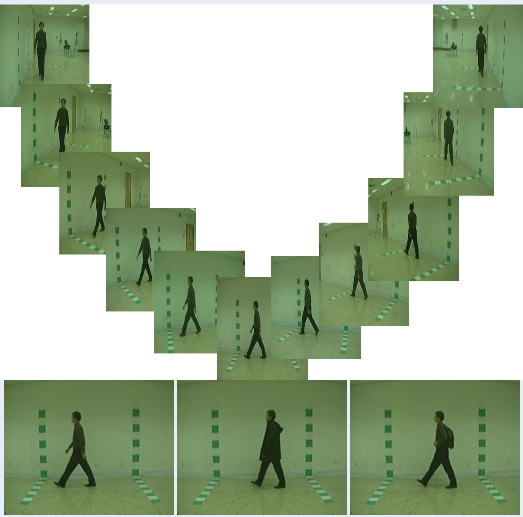Gait recognition has been an active research topic in recent years. The institute of Automation, Chinese Academy of Sciences (CASIA) provides the CASIA Gait Database to gait recognition and related researchers in order to promote the research. In the CASIA Gait Database there are three datasets: Dataset A, Dataset B (multiview dataset) and Dataset C (infrared dataset).
Dataset A (former NLPR Gait Database) was created on Dec. 10, 2001, including 20 persons. Each person has 12 image sequences, 4 sequences for each of the three directions, i.e. parallel, 45 degrees and 90 degrees to the image plane. The length of each sequence is not identical for the variation of the walker's speed, but it must ranges from 37 to 127. The size of Dataset A is about 2.2GB and the database includes 19139 images.

Dataset B is a large multiview gait database, which is created in January 2005. There are 124 subjects, and the gait data was captured from 11 views. Three variations, namely view angle, clothing and carrying condition changes, are separately considered. Besides the video files, we still provide human silhouettes extracted from video files. The detailed information about Dataset B and an evaluation framework can be found in this paper.

Dataset C was collected by an infrared (thermal) camera in Jul.-Aug. 2005. It contains 153 subjects and takes into account four walking conditions: normal walking, slow walking, fast walking, and normal walking with a bag. The videos were all captured at night.

Dataset D was collected synchronously by camera and Rscan Footscan in Jul.-Aug. 2009. It contains 88 subjects and takes into account real surveillance scenes and wide age distribution. This Dataset can be considered as the attempts in exploiting the relations between behavior biometrics and its corresponding prints.The videos and images are collected indoor, while all the subjects are chinese.The details about the Dataset D is comming soon. You can donwload the mat file (for matlab user) from the link.


